This is a demo store. No orders will be fulfilled.
An Early Season Barbel Session To Remember - Ade Kiddell
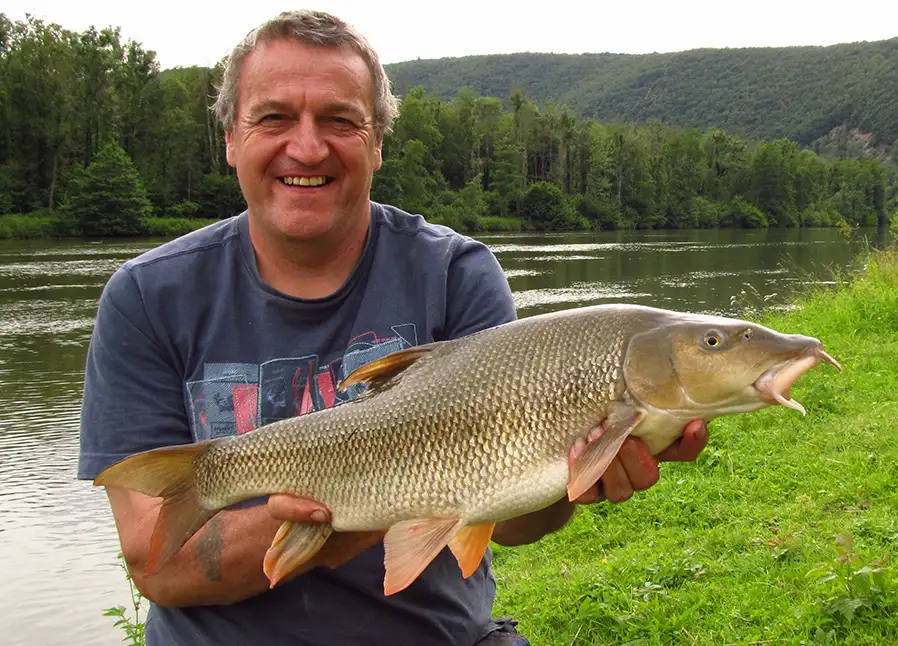
I knew full well the local barbel had spawned in the few days before Hans and Michel’s visit. Spawning always triggers a feeding spell as the fish need to replace energy levels lost during the riggers of spawning. Barbel are very predictable fish so I was confident the bulk of the fish that had recently spawned would be fairly close to the spawning area; usually they congregate in the first area downstream that has highly oxygenated water and plenty of food. We chose an area where a lock cut returns to the main river, 100 meters or so below a huge weir pool. The opening and closing of the lock brings the food and the weir pool the oxygenated water.
The biggest tip I can give any barbel angler is avoid complicated rigs with loads of knots, beads and links. My preferred rig is always a low resistance running rig. The Korum Running Rig Kit is my favourite and my next article will be how to tie this rig to get the best results, so look out for that in the next couple of weeks.
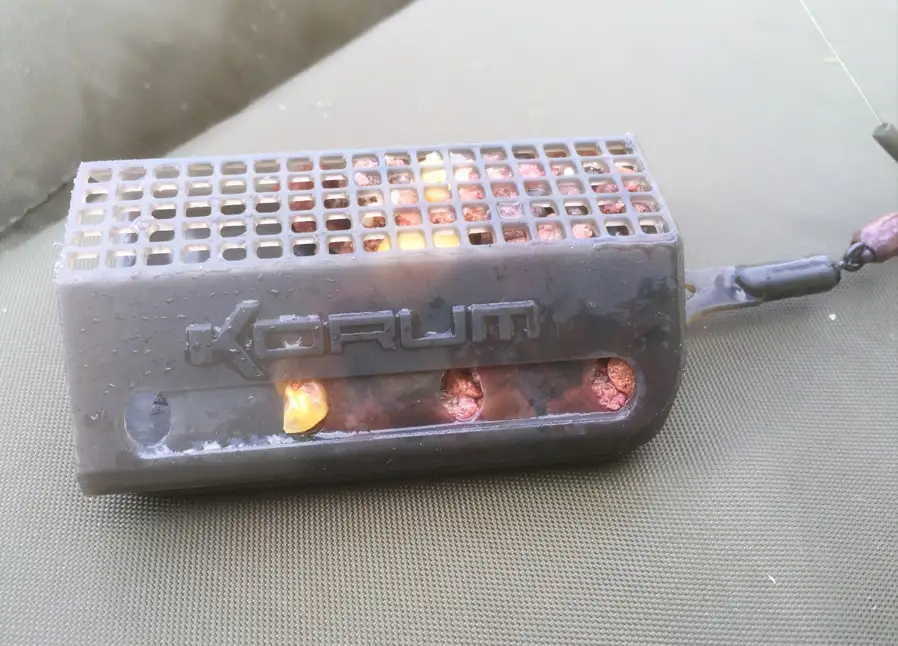
With Michel and Hans rigged up and ready our attention turned to feed. For barbel fishing on big rivers the introduction of feed through a swim feeder is by far the most effective. Simply match the weight of feeder to the flow and the size of feeder to the amount of feed you want to introduce, which will often be determined by the number of fish feeding. The guys chose a large Korum River Feeder carrying 90 gram of feed.

The chosen feed is important, too. The last thing you want in fast flowing water is a light dry mix, which will most likely be washed out of the feeder before it even reaches the bottom. In this scenario a heavy sticky mix that can carry plenty of free offerings is required and I am quite happy if some of this mix is still in the feeder 20 minutes after casting! The mix for our session was straight forward enough: a couple of kilograms of mixed pellets (4mm, 6mm and 8mm), a tin of corn and a tin of hemp. I tipped the whole lot into a large bucket, let the juice from the corn and hemp soften the pellets and, within 15 minutes, the mix was ready. It’s a regular mix of mine and I sometimes add a bit of water if it’s too dry or some fishmeal ground bait if it’s too wet. It’s important when you fill the feeder that you cram the bait in fairly hard to avoid it ejecting from the feeder too early. With the river carrying a bit of colour I find a highly visible bait can be helpful. The guys had some boilies that offered a nice cheesy flavour and dull yellow colour. I also added to the bait box some Sonubaits Oozing Cheesy Garlic Dumbbells and some F1 Flavoured Corn.
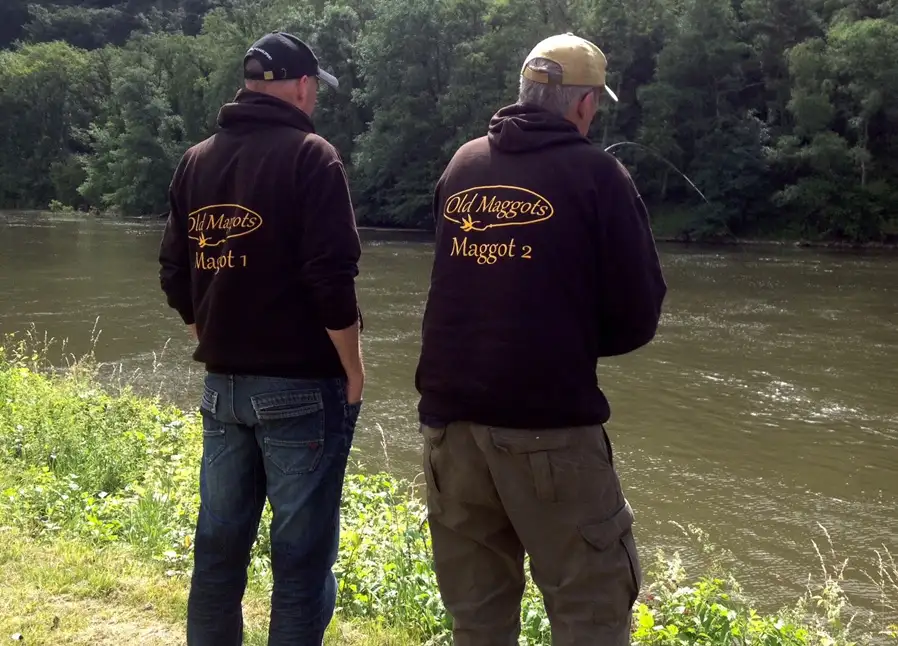
We didn't have long to wait for the first action as a greedy chub took the bait within seconds of Hans casting. Within a couple of minutes the next bite signaled a harder battle ahead as the first barbel of the session fought for freedom. With the guys already having plenty of barbel experience under their belts it was good to see how much emphasis they put on proper handling of the barbel in their temporary care.
Barbel fight so hard they are often totally exhausted once they reach the net so it’s vital they are allowed to recover in the net before removing from the water. I always leave them to recover in the net until they look strong and can hold them selves without toppling or turning up. This might be up to 10 minutes but it’s important not to rush it. Whilst they recover make sure your un-hooking mat is wetted and scales sling and camera are ready if required. Once the formalities are done returning the fish correctly is very important, too, and you should allow the fish time again to recover in the net before making sure it swims strongly away.
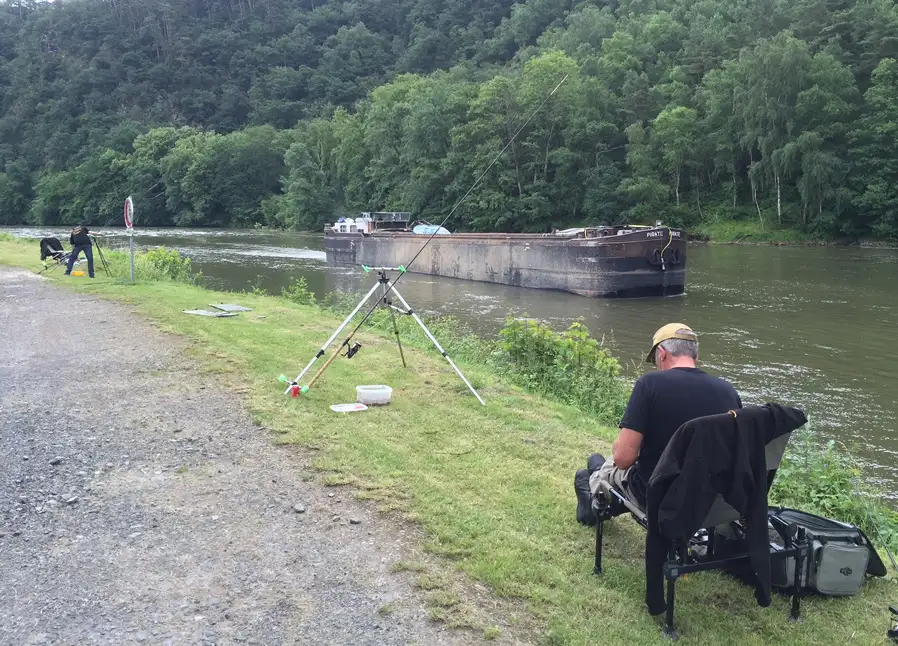
Once the shoal of hungry barbel found the free offerings they got their heads down and The Old Maggots (Hans and Michel) took full advantage as barbel after barbel graced their nets. The only interruption in sport came when a boat entered or exited the lock; this slowed the fishing but only temporarily. By the end of their first day the guys were worn out as 41 barbel had been landed, along with the solitary chub from the first cast.
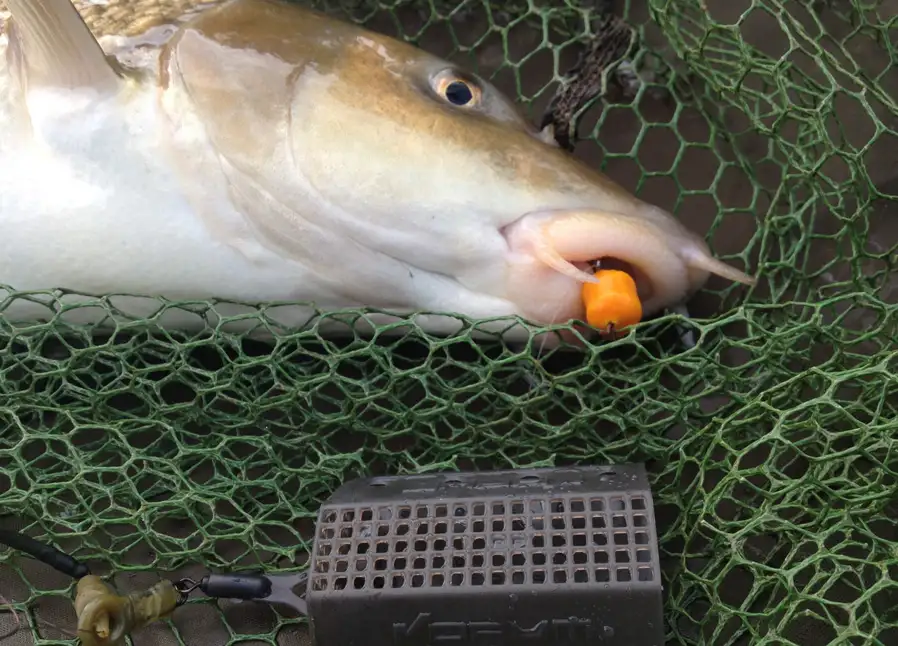
The next day the guys were out early and returned to the area and were soon into the barbel again; sport was even more hectic then the day before. At times they fished with just one rod each as it was impossible to fish safely with two; whilst playing one fish the other rod would also hook a fish and chaos would ensue!
In just eight hours fishing they managed a combined total of 42 barbel and a single bream. For those of you keeping a running total that’s 83 barbel over the two days! They packed in for the drive back to Holland with the fish still feeding, worn out and with beaming smiles. Well done guys, it was certainly a session to remember.
Employing the same tactics I returned to the swim three days later to find the fish still hungry and, along with my good lady, managed 30 barbel in just four hours. It was some of the most intensive barbel fishing I can remember and the middle Severn in its glory days was the last time I had had sport like it.
I hope your early season sport is going just as well as mine is, and remember to look out for the rig feature coming soon.




